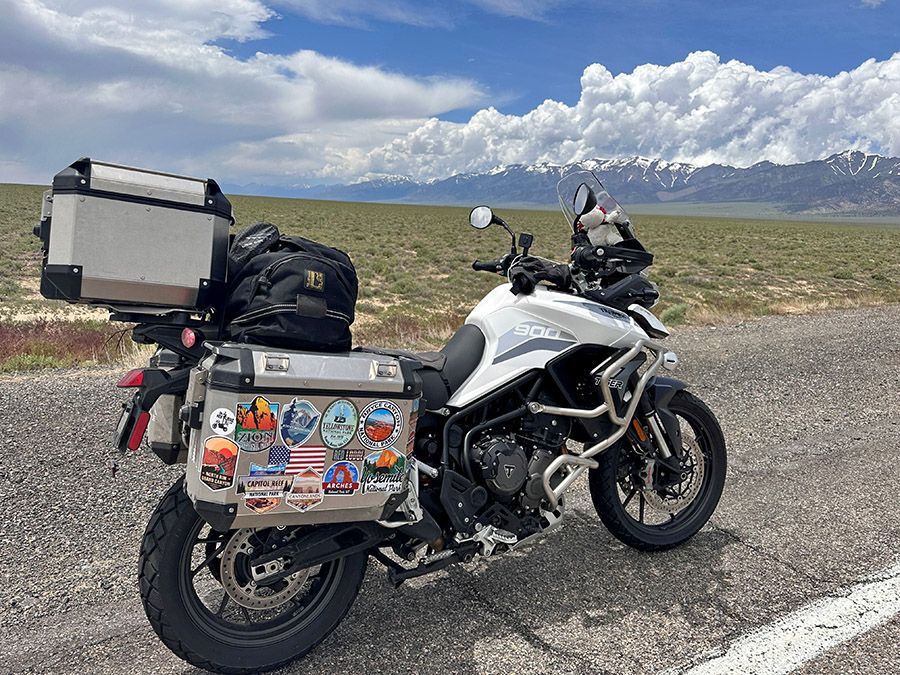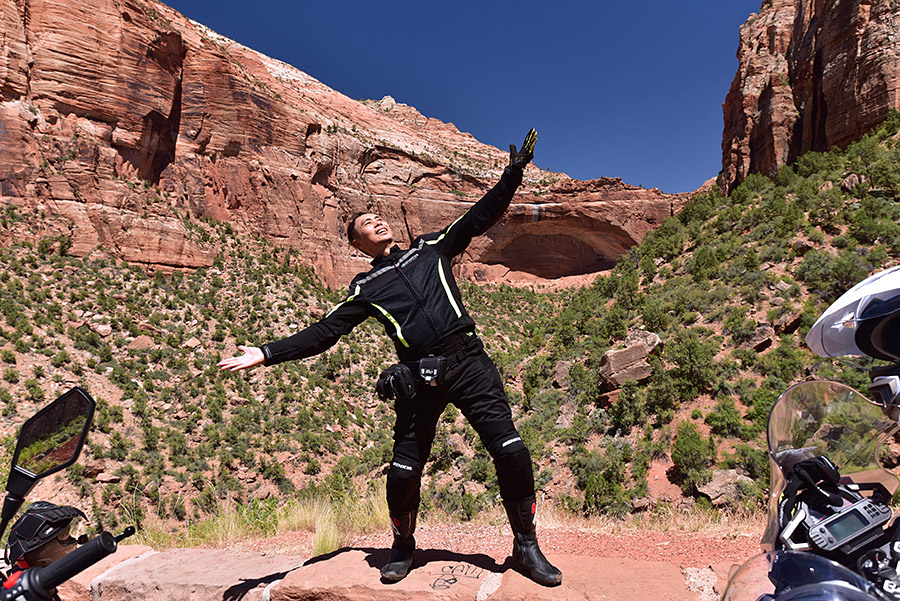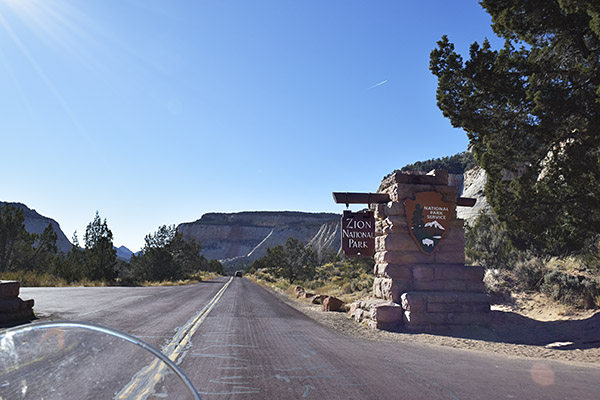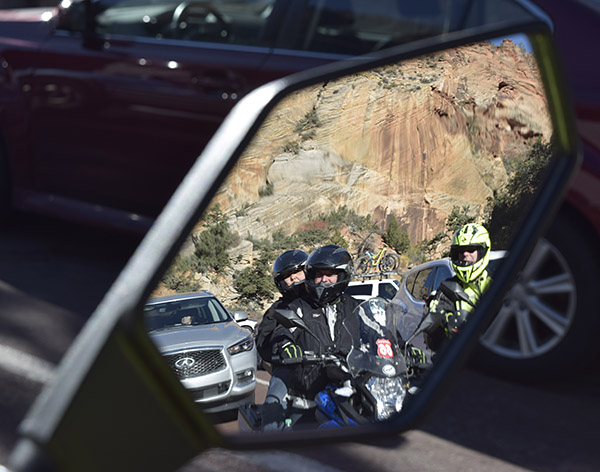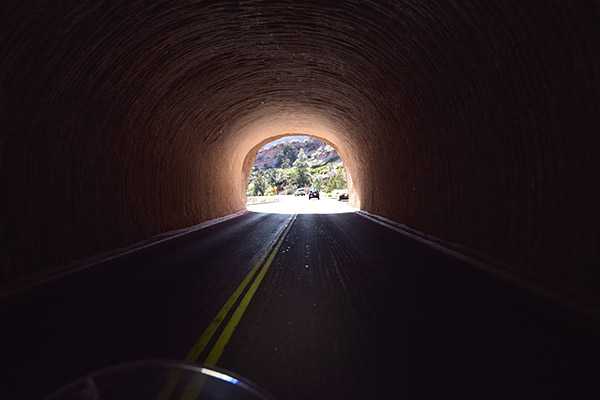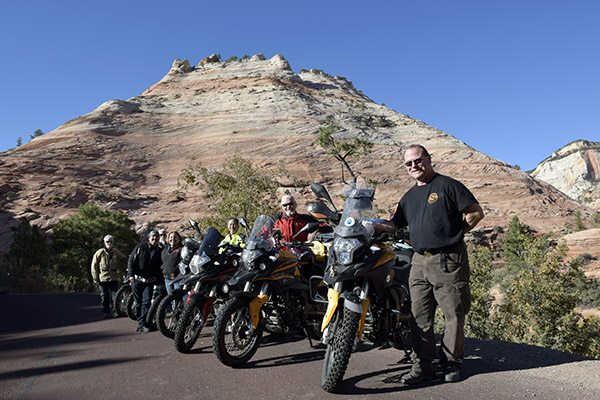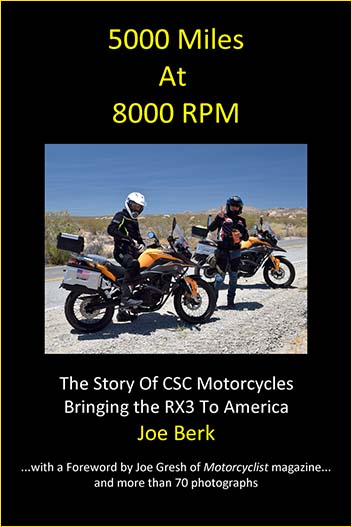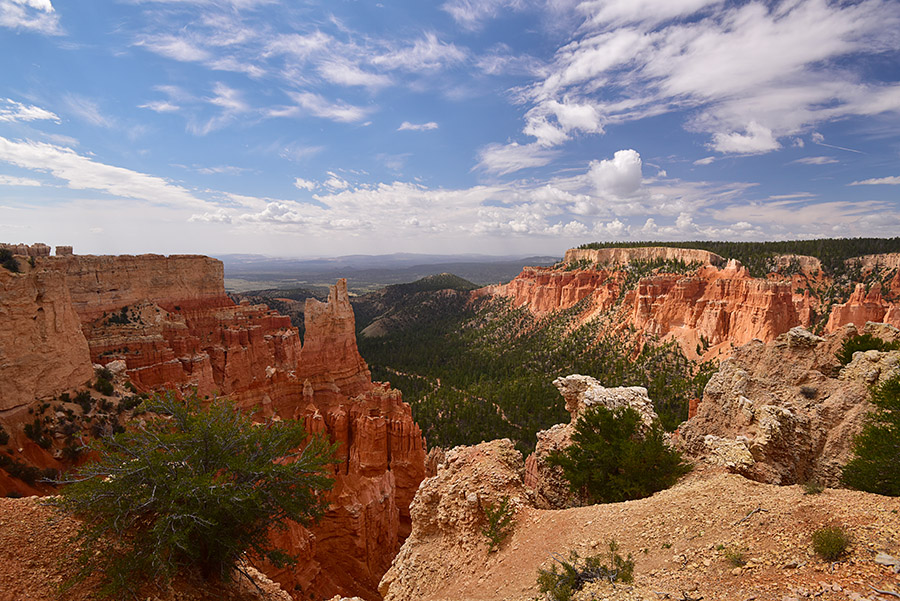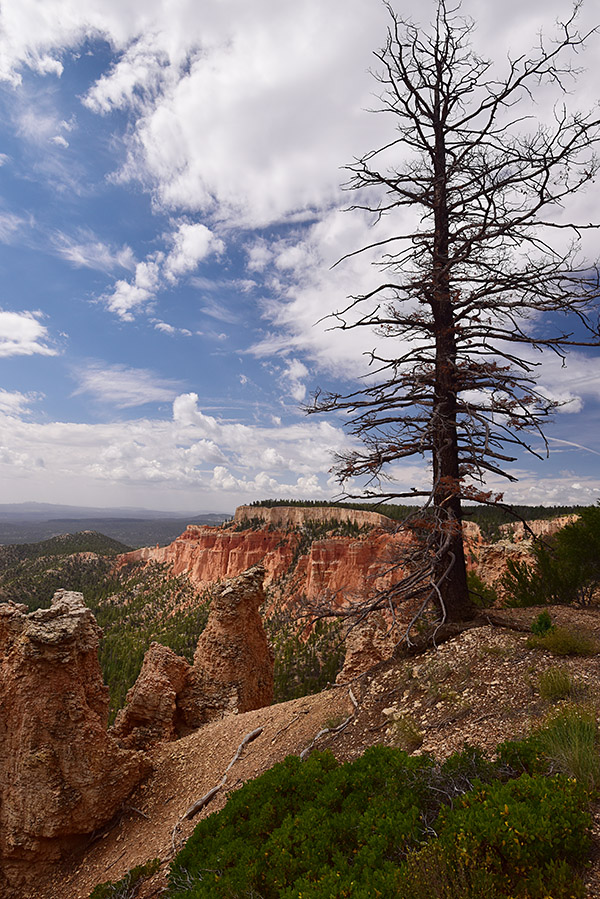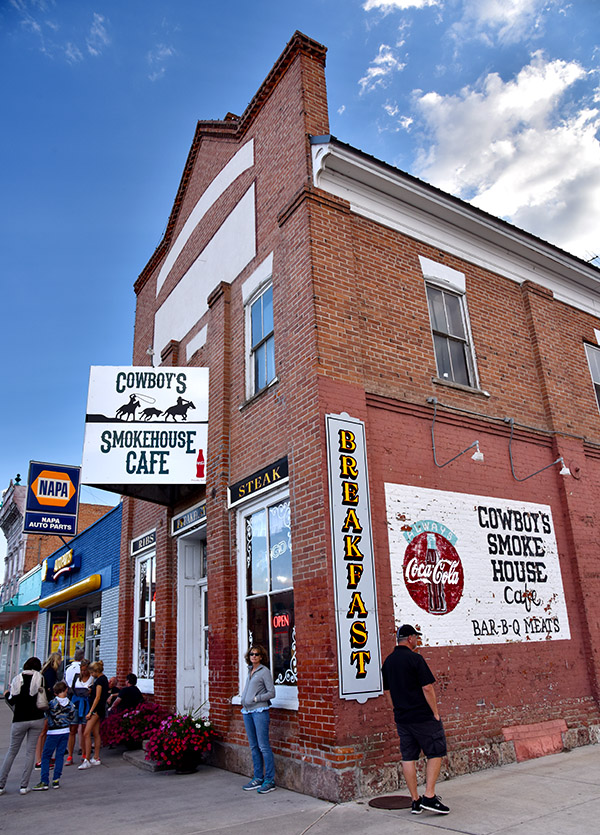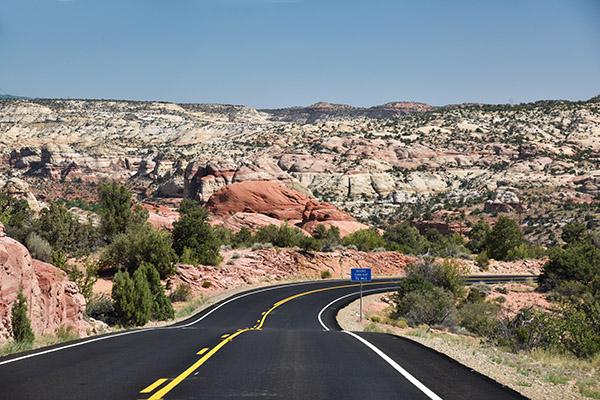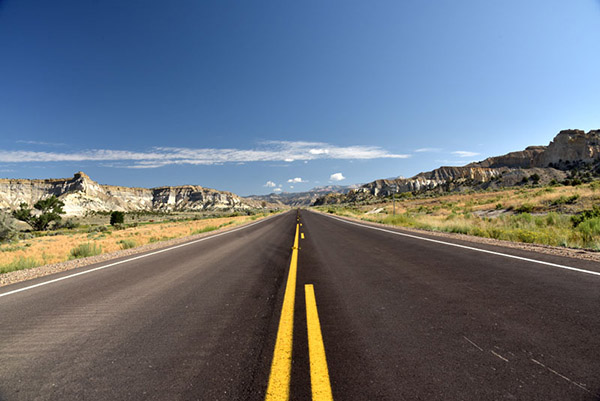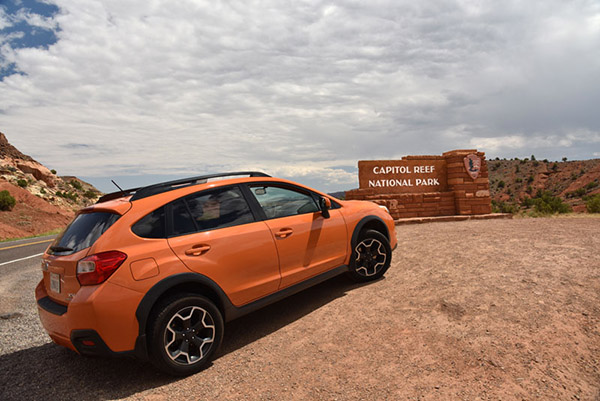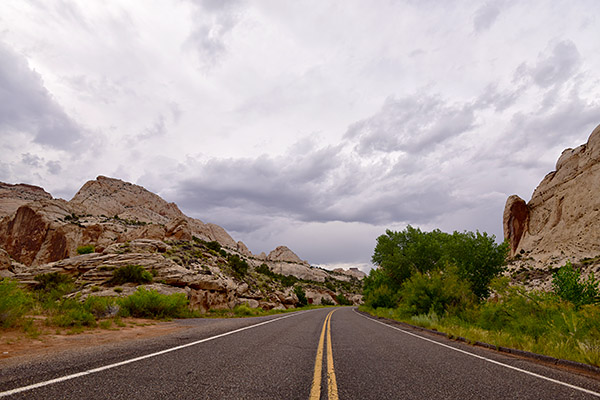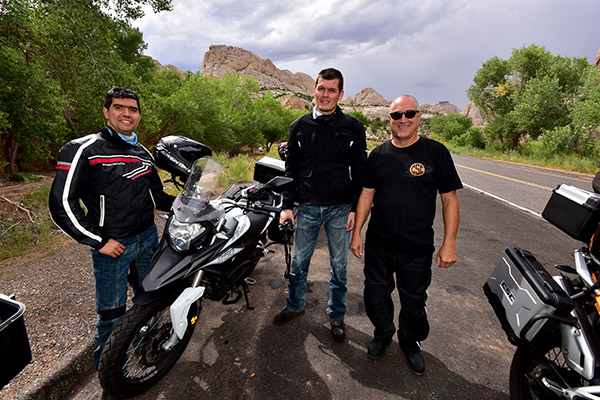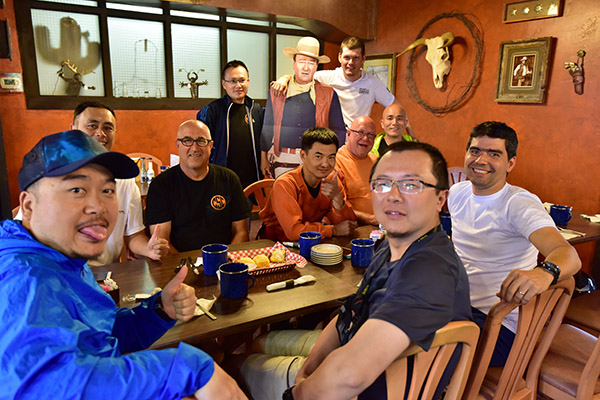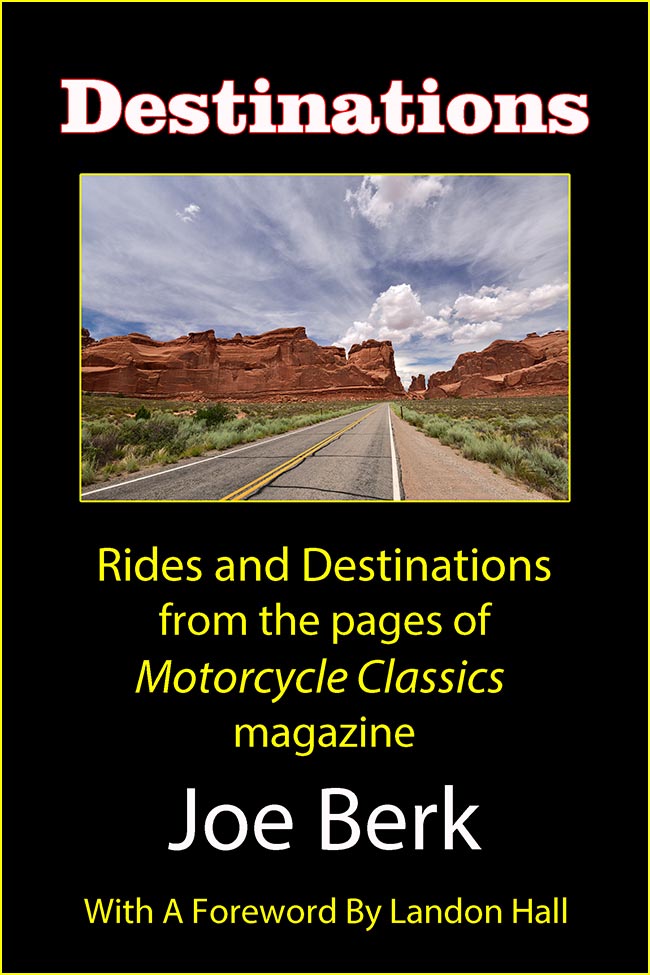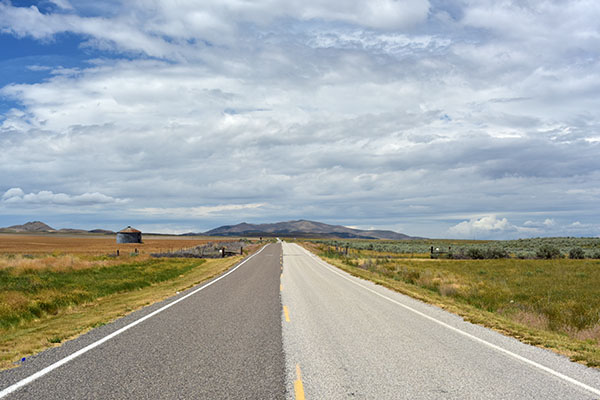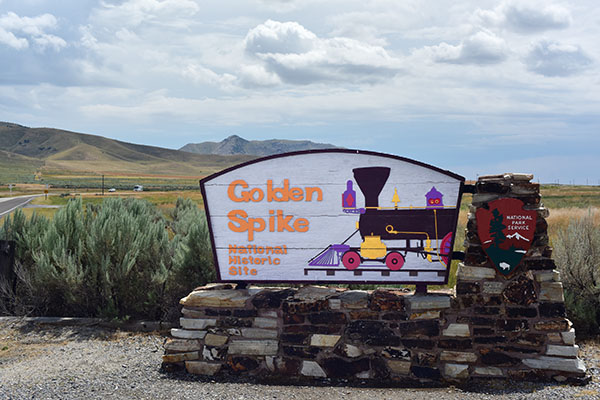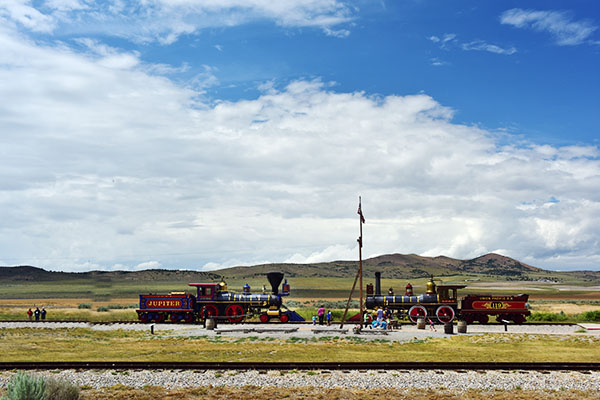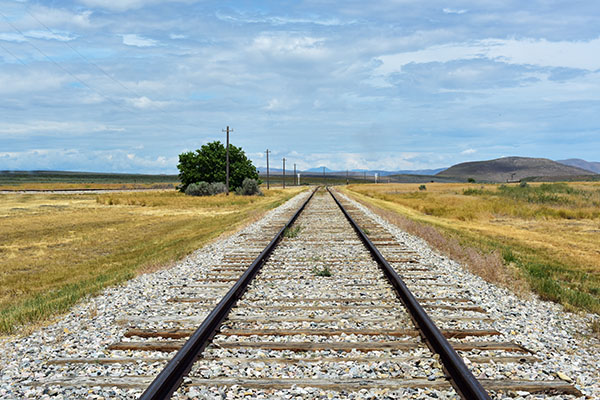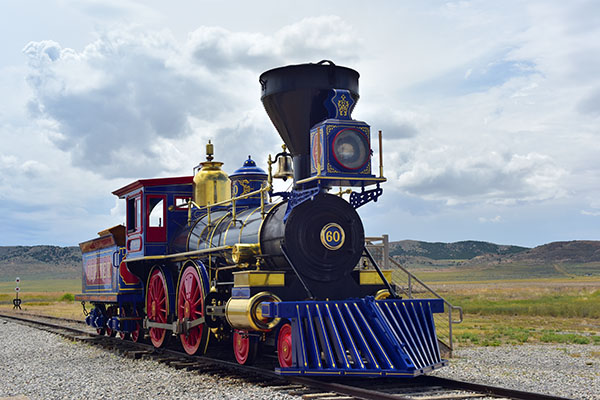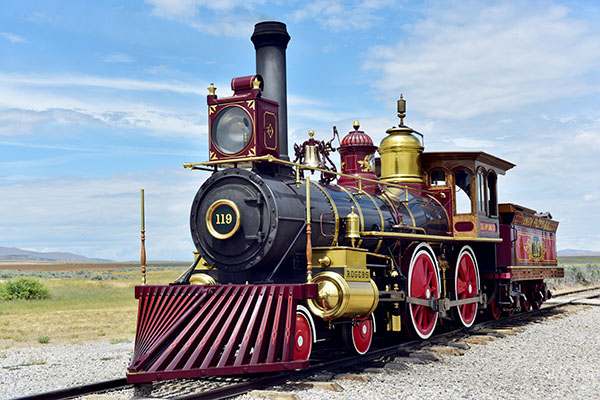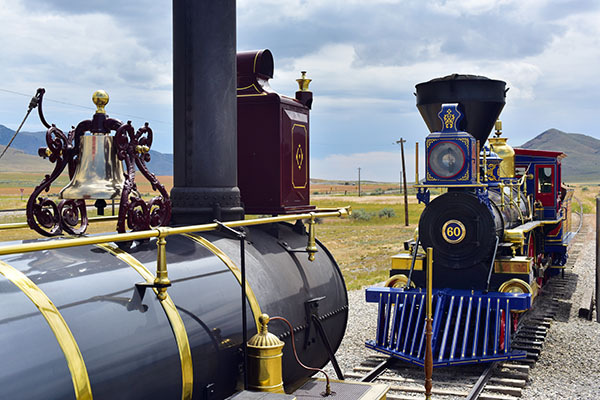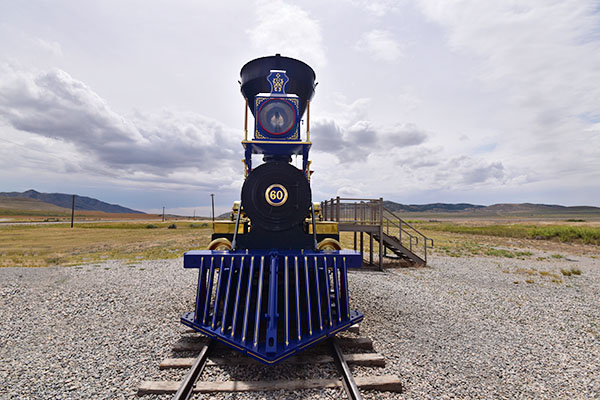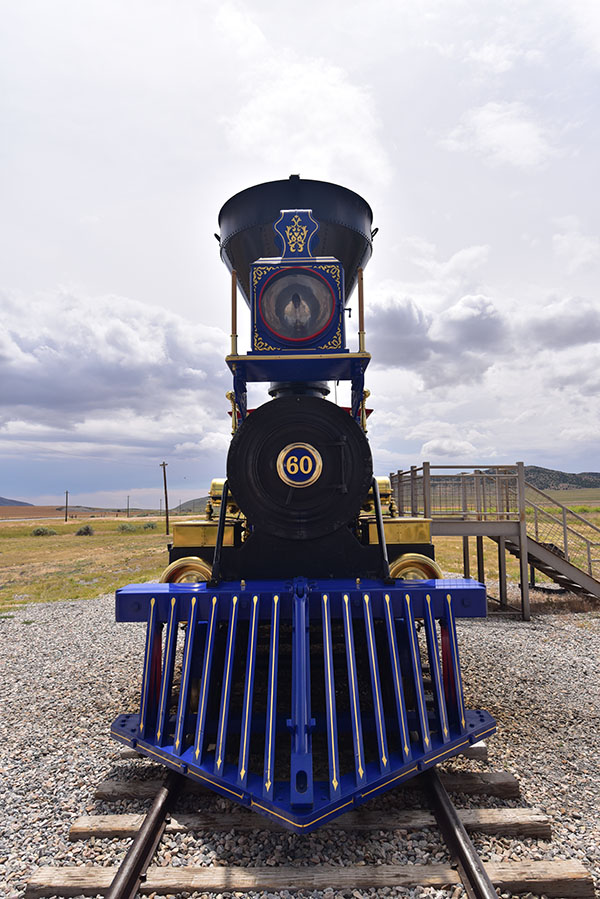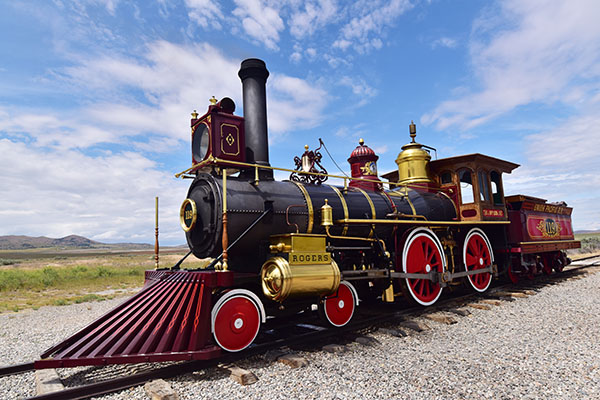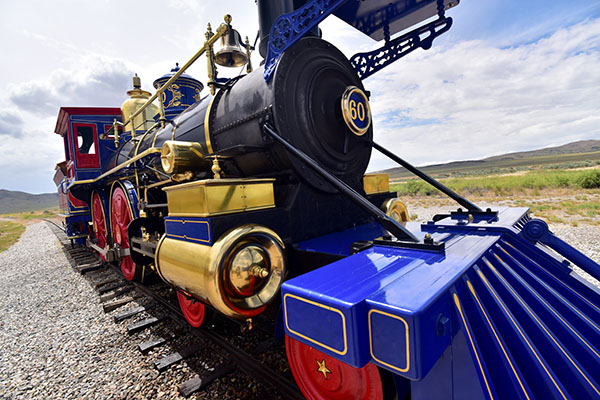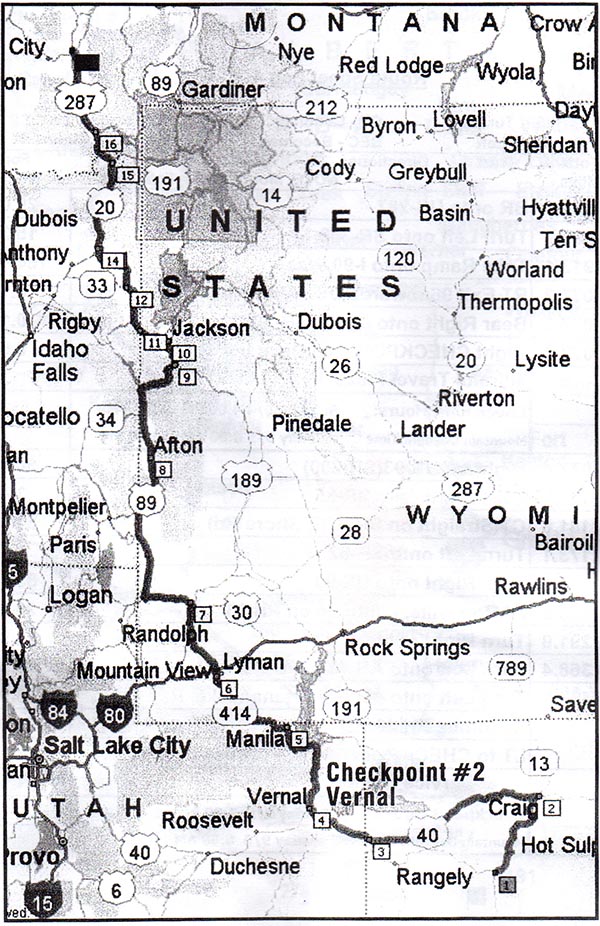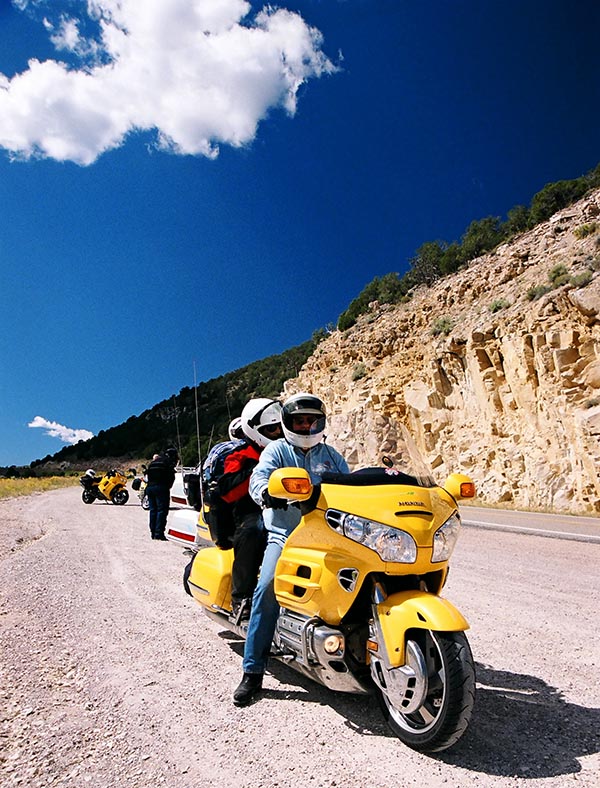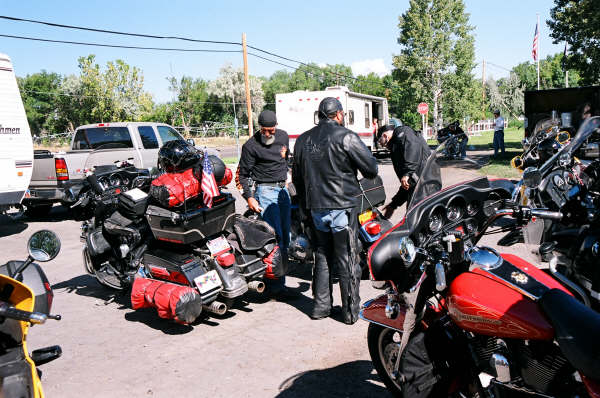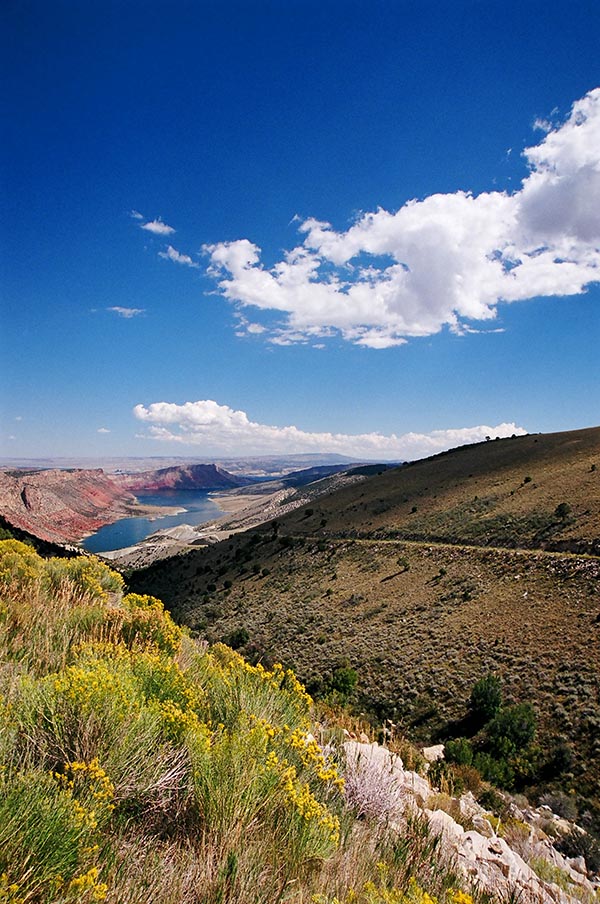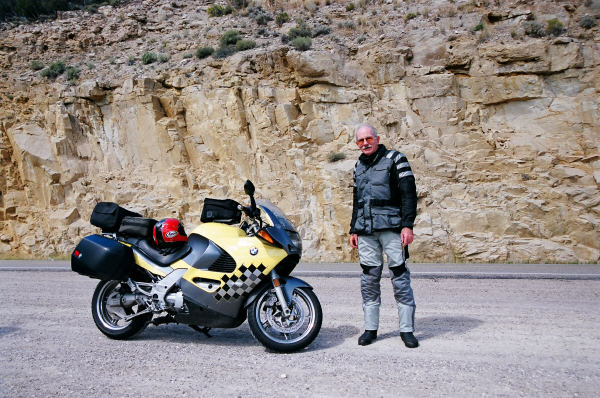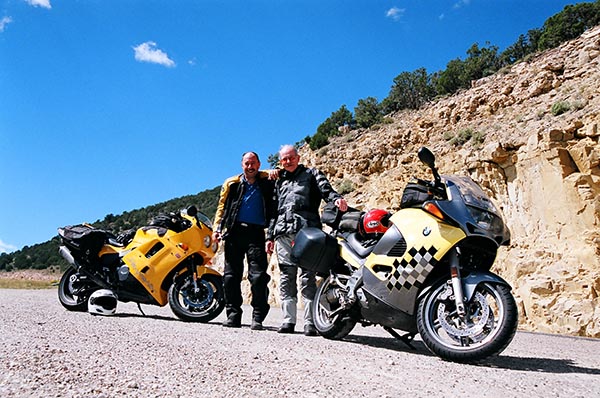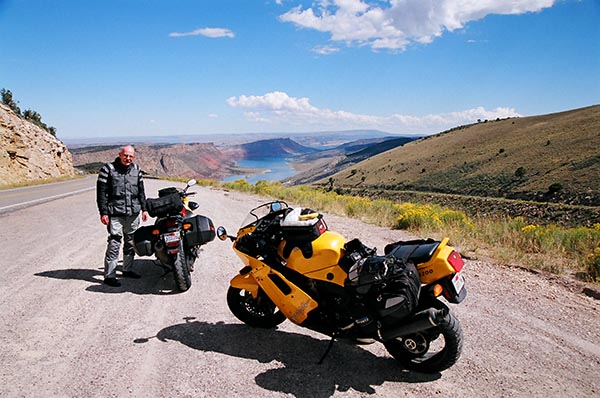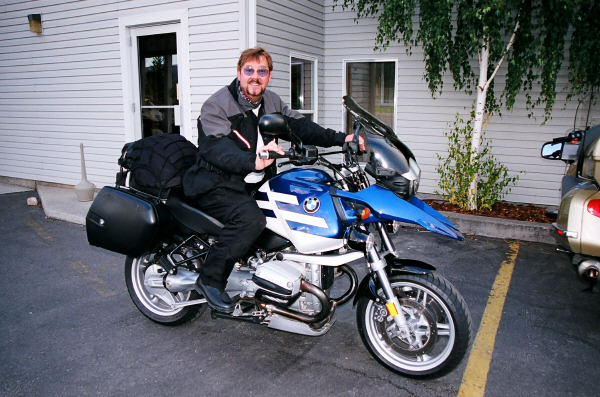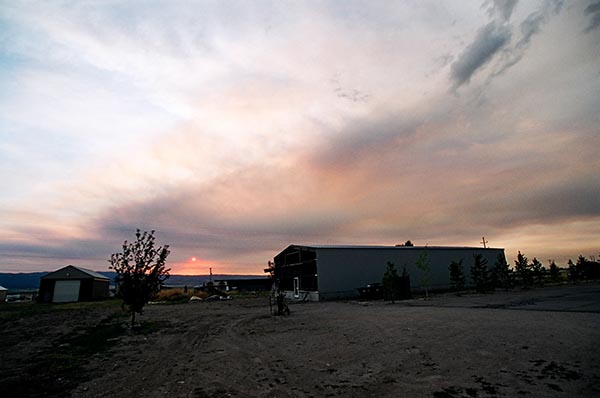By Bobbie Surber
Welcome back to the next chapter of my solo motorcycle journey from my hometown of Sedona, Arizona, to the captivating landscapes of Canada. In Part One, I shared the exhilarating start of my adventure, from Sedona to the awe-inspiring beauty of the Grand Canyon and the mesmerizing Zion National Park. Now, as I continue northward on my trusty Triumph Tiger 900 GT Pro, lovingly named Tippi, join me in experiencing the next leg of this epic ride.
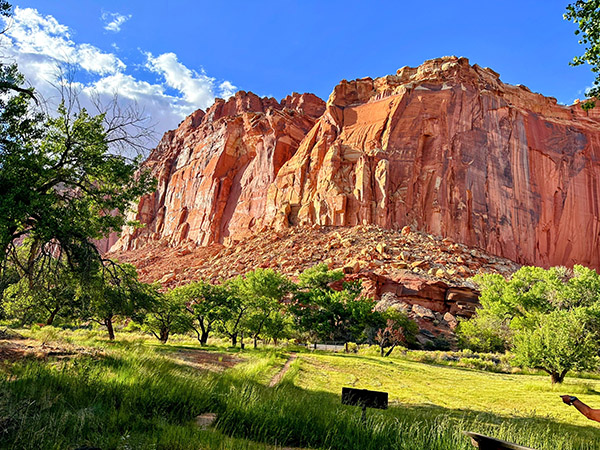
As I left the captivating beauty of Zion National Park behind, I couldn’t help but marvel at the magic of solo travel. The open road stretched out before me, promising new adventures and the opportunity to connect with the world in ways that only solo exploration allows. My heart swelled with anticipation as I headed north into Utah, a state known for its stunning natural landscapes.
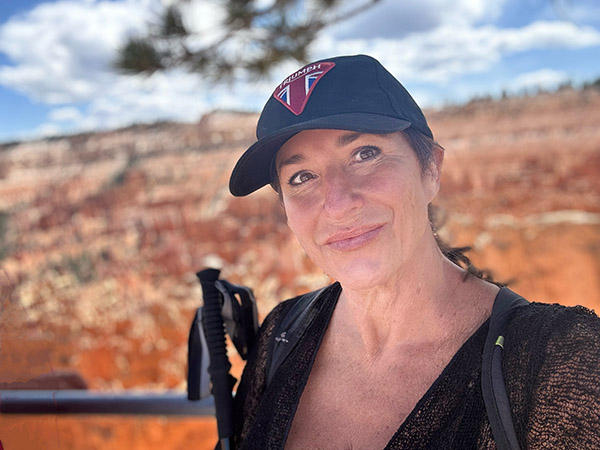
A Return to Bryce Canyon
My next destination was my beloved Bryce Canyon National Park. The ride to Bryce Canyon was a scenic marvel in itself. Utah’s highway 89 to Route 12 made its way through crimson canyons, past towering rock formations, and into high-altitude forests. Every twist and turn of the road revealed a new panorama of breathtaking beauty.

Arriving at Bryce Canyon, I was greeted by a surreal landscape of hoodoos—towering, otherworldly rock spires that seemed to defy gravity. I hiked once again the trails that wound through the park, taking in the views from vantage points like Sunrise Point and Inspiration Point. Wall Street trail was closed for repairs, but trusty old favorites satisfied my need for a day of hiking. My camp spot at Sunset Campground gave me the chance at an early morning sunrise the next morning. A predawn wakeup found me walking to the rims edge to watch the sun slowly rise below the horizon, the hoodoos took on a fiery glow, casting long, dramatic shadows that danced across the amphitheater-like terrain. Bryce Canyon’s mystical allure left an indelible mark on my soul, reminding me why I embarked on this journey in the first place. After a second night at Bryce, I was ready to tackle another epic day of riding Route 12 through Escalante to the sweetest underrated Capital Reef National Park.
Exploring Route 12 and Capitol Reef
Continuing my adventure, the following morning, I eagerly resumed my route on Highway 12, heading towards my favorite section of the road, high above the captivating Grand Staircase-Escalante National Monument. This expansive and remote region boasts rugged canyons, vibrant cliffs, and extraordinary geological formations. The landscape, with its impossible rock formations, treated me to endless twisties, creating a sense of otherworldliness. My Tiger 900 was as happy as I was as I relaxed into the ride and allowed her to remind me again what her three cylinders can do. Both of us were in sync as we leaned into curve after curve as we blasted down to the bottom of the canyon.
As I reluctantly approached the tiny town of Boulder, Utah, I realized I had made short order through the endless twisties of this section of Route 12. However, I was unexpectedly greeted by an old-school cattle round-up, complete with cowgirls and boys herding a large herd down Highway 12! After a brief turnaround, I found solace in my favorite restaurant, the Burr Trail Grill. Their farm-fresh ingredients delighted my taste buds, whether it was their fresh arugula salad topped with local goat cheese or their beastly-sized burgers that proved a challenge to conquer.
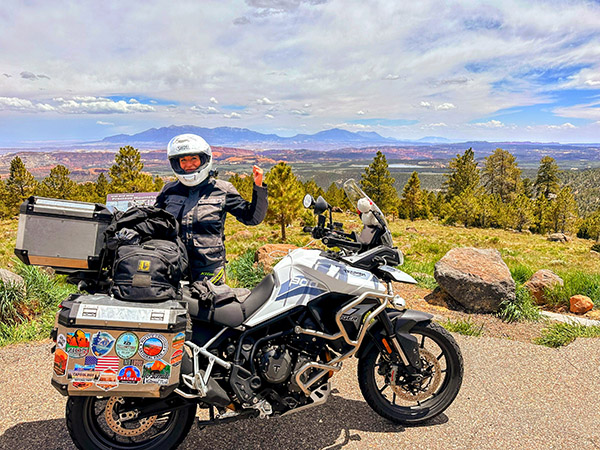
Resuming my journey on Highway 12, I found myself in an unexpected predicament. The cattle herd’s progress was slow, and I crawled along, clutching endlessly as I felt my left hand about to begin a serious complaint! Amidst the frustration, two memorable moments emerged. Firstly, a passerby exclaimed, “Dude, you have the sweetest bike and setup!” We shared a laugh as he realized I was indeed “dudeless.” Secondly, after navigating my way to the front of the line, I convinced the lead cowboy to move the herd slightly to the right, allowing me to pass. Maneuvering my bike through the cows became a comical adventure, with prayers that the sound of my motor wouldn’t startle them. Experiencing this traditional cattle drive in 2023 felt like a slice of Americana and added yet another reason to love Utah.
Leaving the cattle behind, I ascended Boulder Mountain, where endless views revealed the backside of Capitol Reef on the right and scenic meadows with clusters of aspen, fir, and spruce trees on the left. Surprisingly, the mountain still boasted more snow than expected for June. Camping, fishing, and wildlife viewing opportunities abound in this mountainous region, with numerous campgrounds and dispersed campsites available. I’ve personally spent nights here, savoring the breathtaking vista overlooking Capitol Reef and the sprawling valley floor. Soon enough I was descending Boulder Mountain and into the small town of Torrey, UT, and just a short few miles away from Capitol Reef National Park for two more nights of camping. A quick setup of my camp, and I was off to town for a much-needed shower and a cold beer! Later that day, a lovely couple I met in Zion joined me at my campsite and I was treated to a homecooked Korean chicken dinner, which was a far cry from the instant ramen I was planning for dinner. A lovely couple who reminded me that the gift of travel is the unexpected friends we make along the way.
The next morning found me out on the trail a hump up to the top of the mesa for a panoramic view of the park. The air was crisp with hints of the heat to follow. The trail descends into a slot canyon then an arroyo wash to the other side of the park and beyond. Reluctantly heading back, I got on Tippi and explored the nearby petroglyphs. All in all, my short stay was a rewarding two nights and now headed to the not-so-famous outside of crazy riders who seek out remote roads Highway 50, billed as the loneliest highway in America!
Highway 50: The Loneliest Highway with a Detour to Great Basin National Park
I made a short order of breaking camp, and in no time Tippi and I were on highway 24 with the goal of making it to my 5th National Park, Great Basin. Following Route 24 goes through a rural farming section of the state with many small Mormon communities and opportunity for a breaks, food, and gas. I was eager to blow through this well-familiar route to get to Highway 50 and cut my teeth on a section of road I had been warned NOT to ride.

As I picked up Highway 50 off Interstate 15, I soon hit the famous first road sign and stopped to document my ride on her with a pic. With once again threatening storms, I glanced at the mountain ahead and thought how bad could it be? It was bad, I was wrong once again guessing the threat of a storm. A short very wet ride later, I left behind Highway 50 for a few days to visit the park. As a first timer to Great Basin NP, I was truly blown away! You enter the tiny town of Baker on the desert floor then 20 minutes later you are in the mountains with thick forest and views overlooking the high desert plains that seem to go on forever. Not to be missed is a guided tour of Lehman Caves. Truly the highlight of my stay. I selected one of the higher small campgrounds and was rewarded with a huge site surrounded by trees and brush with the river roaring behind me.
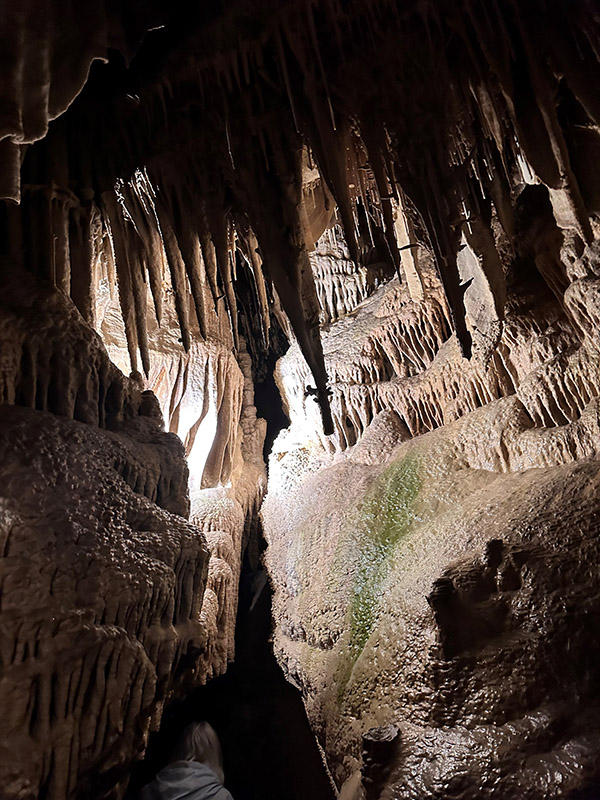
Reluctantly bidding farewell to Baker, I rejoined Highway 50, heading towards my next destination, South Lake Tahoe. Contrary to the dire warnings of scarce gas stations, I discovered that this notion was unfounded. Approximately 70 miles down the road, I arrived at Ely, another small mining town with plenty of services. After a quick refuel, I resumed my journey, realizing that the otherwise flat stretches of road were intermittently punctuated by mountain passes exceeding 7000 feet in elevation. These segments offered breathtaking vistas and enough twists and turns to satisfy both Tippi and me.
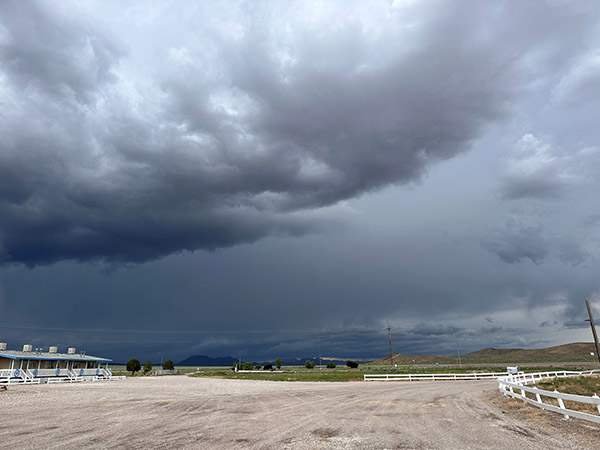
My first mountain pass, before descending into Ely, Nevada, presented an exhilarating ordeal with rain, lightning, and a brief ten-minute ride through hail. Eighty miles further, I found myself in the town of Eureka, where the threatening skies curtailed my exploration time. Nevertheless, I managed to visit a few must-see attractions, including the Opera House, built in 1879, the still-functional Courthouse of the same vintage, and a brief excursion to the town’s cemetery, where a variety of burial sites represented different social organizations, religious groups, and ethnicities. This walk-through history provided a fascinating glimpse into the town’s past.
Continuing on Highway 50, with the ominous skies in my rearview mirrors, I was reminded of the urgency to press on towards my next stop—Austin, Nevada. This old mining camp retains its rustic charm and has evolved into a haven for camping, hiking, and mountain biking, thanks to its proximity to the towering Toiyabe Mountains. During a pit stop, I encountered a large group of riders following the Pony Express Trail, who praised my adventure, while I vowed to return in the near future to explore that historic route.
Reluctantly bidding farewell to this enchanting mountain town, I embarked on another 112-mile stretch to Fallon, Nevada. This promised a well-deserved lunch break and refueling opportunity before the final leg of my journey to Lake Tahoe. As hunger pangs intensified, I hurriedly pulled into the first gas station I encountered. Curiously, the ground appeared slanted, making it impossible to safely park my bike with its kickstand without an extreme lean. Oddly, as my kickstand tends to be a bit high, I often worry about Tippi toppling over. Trying another station, I realized that my kickstand was not misaligned but broken—a sudden and unfortunate realization. With every ounce of strength, I fought to prevent Tippi’s full weight from pinning me between the gas pump curb and the engine crash bar. As I cried out for help, a kind soul named Caleb rushed to my aid, assisting me in righting Tippi. Examining the kickstand, I conceded that my lunch break was a lost cause. I refueled while seated on my bike and came to terms with the fact that I would have to ride the rest of the way without lunch and with a dangling kickstand, just inches off the ground.
Continuing Towards Lake Tahoe
Arriving in Lake Tahoe was like reaching an oasis after a day filled with challenges and stunning scenery. The sight of the crystal-clear waters surrounded by towering pine trees was simply breathtaking. I met up with Mike Huber, a fellow adventure rider, as we eagerly exchanged stories of our respective journeys over drinks and pizza. Mike is a seasoned rider with an incredible collection of travel stories and insights, and this blog, which is a treasure trove of motorcycle adventures.
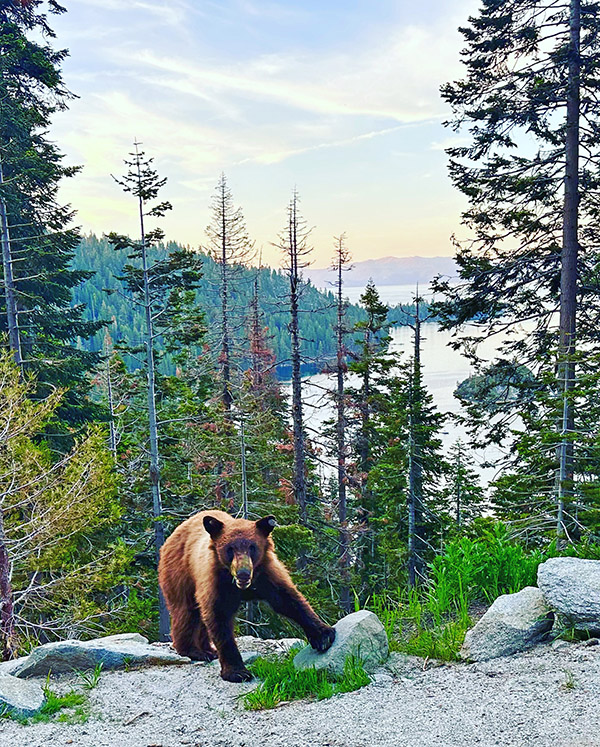
We decided to make the most of our time in Lake Tahoe by exploring the area together and spending time with our dear friend Yvette who had left Sedona for the mountains and lakes surrounding Tahoe. Two up on Tippi, our first stop was a visit to Emerald Bay State Park, a gem nestled on the lake’s southwest shore. A short hike up a roadside trail took us to a stunning vista overlooking Emerald Bay below. The clear blue waters and Fannette Island in the middle of the bay made for a postcard-perfect scene. At sunset we were even rewarded with a surprise pop up of a brown bear who a few feet away provided us with a pose straight up worthy of National Geographic!
Lake Tahoe, with its stunning shoreline, pristine waters, and surrounding mountains, offers many outdoor activities. We decided to spend the next afternoon cruising around the lake, taking in the panoramic views and stopping at scenic overlooks. Riding around Lake Tahoe was a highlight of my journey, and I couldn’t have asked for better company.
Conclusions
As I reflect on the second part of my solo motorcycle journey from Sedona to Canada, I’m filled with deep gratitude for the experiences and sights that have unfolded before me. From the awe-inspiring beauty of Bryce Canyon to the challenging twisties of Route 12, from the serene landscapes of Great Basin, this adventure has been a testament to the power of the open road and the indomitable spirit of solo travel.
Every mile has been a lesson in self-discovery, a reminder of the world’s beauty, and a celebration of the freedom that comes with embracing the unknown. The road has been my companion, and the landscapes have been my muse. And as I continue to ride north into Canada, I know the journey is far from over. There are more roads to explore, adventures to embrace, and stories to tell.
Stay tuned for the next chapter of this solo ride from Sedona to Canada. The open road beckons, and I’m eager to see where it will lead me on this journey of a lifetime.
Never miss an ExNotes blog:

